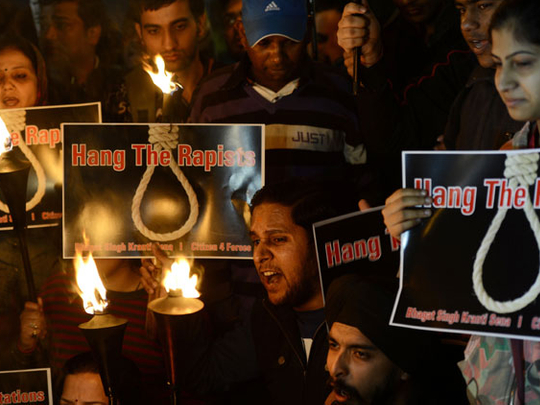
A 23-year-old paramedical student brutally gang-raped, beaten up and then dumped, along with her male companion, from a moving bus on a busy New Delhi thoroughfare late last Sunday night. For anyone with an iota of knowledge about the darker side of India’s national capital, such incidents are so common that they would usually not merit more than a cursory mention on one of the inside pages of newspapers. For starters, as many as 635 cases of rape have been registered in the swanky metropolis so far this year. Yet, what probably sparked an unprecedented nationwide furore in India over last Sunday’s incident was the sheer audacity of the rapists. They had the gall to assault the dignity of a woman and inflict life-threatening injuries to her inside a private bus, even as the vehicle was being made to roam the streets of South Delhi, passing at least three police checkpoints.
Delhi is one city that has really thrived in all its dichotomies over centuries. In The Last Mughal, celebrated author and historian William Dalrymple has given an apt account of how, at the fag end of the reign of the last Mughal emperor — Bahadur Shah Zafar — Delhi played host to such myriads of diverse socio-cultural and political interests. Dalrymple unveils a fascinating account of Delhi in the mid-19th century. It is a study in contrast of a decadent Mughal empire — still steeped in its love for the many-splendoured gift called life, with all its finer accompaniments — on the one hand and that of a regimented, utterly disciplined existence as epitomised by the British residents of the city on the other. Even today, Delhi continues to be a study in contrast. While post-independence India has necessitated Delhi’s growth in tangible, economic terms well beyond the confines of the National Capital Region, the sinister under-belly of India’s most prestigious city has also become all too apparent. Since India’s independence in 1947, Delhi has symbolised what the rest of the country has aspired to be — a pulpit to showcase its success, its talent … a stage to stake a legitimate claim to a share of the pie that prospering India is … and a platform for high-octane drama in the name of political and social righteousness.
While these contributed immensely towards making Delhi a melting pot of diverse cultures and interests, they also undercut much of the city’s gloss by allowing shadowy elements to come home to roost. And what has indeed been unfortunate is the inability of successive governments to weed out this inherent, almost cancerous social malaise of rape that has afflicted public life in Delhi for generations. A city that prides itself for being the hotbed of Indian politics and culture, a city that houses such haloed institutions like the Delhi IIT and JNU — making such vital contributions towards India’s intellectual capital — is also home to some of the worst crimes against women in the country. Delhi has recorded the highest number of rapes in India, with the figure rising from 507 cases in 2010 to 635 cases in 2012, the Hindustan Times reported, citing National Crime Records Bureau figures. These are shameful figures for a nation that aspires to be among the who’s who in a new world order — a key concomitant of a region that has been singled out by US President Barack Obama as the “Asian pivot”.
The rape victim was severely beaten up with an iron rod by her assailants and parts of her intestines had to be removed after they were deemed “unviable” due to the impact of the injury to her abdomen. In fact, according to some of the doctors attending to the victim, they had not seen such a heinous crime in their long careers. Multiple surgeries had to be conducted on the woman who continues to be in intensive care. It is no surprise, therefore, that citizens across India took to the streets to protest such a barbaric act. From Kolkata to Bhopal, Mumbai to Bengaluru, people came out in their numbers with one common refrain: ‘Enough is enough’. While effigies of Union Home Minister Sushil Kumar Shinde were burnt in Kolkata, several thousands gathered at India Gate in New Delhi to demand exemplary action against the criminals. It was indeed unprecedented in the history of independent India that at one point last Wednesday evening, the entire Raisina Hill complex — that houses Rashtrapati Bhavan (the president’s official residence), the Union Home Ministry and other central government offices — was cordoned off to keep demonstrators at bay.
It may not be India’s Tahrir Square moment yet, but from the nature of mass outpourings and anger across India, one thing is certain — no government should take such spontaneous display of emotion lightly. If India can speak in one voice during the Kargil incursions or for that matter when it wins the cricket World Cup, then so be it for women’s right to safety and dignity in society.
In what can be construed as the worst sign of government apathy, the union home minister was caught yawning in parliament during an all-important question hour on the burning issue. So for the benefit of people like Shinde, let it be said that in a democracy, anyone who makes the mistake of ignoring the voice of the people may soon find himself reduced to a museum artefact!









